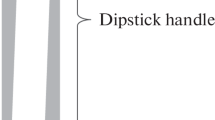Abstract
Brazilian purpuric fever (BPF) is a highly fatal pediatric disease that may follow an episode of purulent conjunctivitis caused by a virulent clone of Haemophilus influenzae biogroup aegyptius (Hae). Oral rifampin prophylaxis, by eliminating carriage of the BPF clone in children with conjunctivitis, may prevent onset of the systemic disease. A test to detect the BPF clone directly from eye swabs could indentify those in need of prophylaxis. This is a preliminary report of a rapid dot immunoassay performed on a “flow-through” cartridge that was developed for use under field conditions. The test is based upon recognition of a unique epitope of the 25-kDa pilin protein on the surface of BPF clone cells by a monoclonal antibody. With 36 laboratory-maintained cultures of Hae (15 clone isolates and 21 others), sensitivity of the assay was 67% and specificity was 95%. When fimbrial-enriched (25-kDa+) phenotypes of five false-negative clone strains were prepared for use as test antigens, sensitivity rose to 100%. Evaluation of the immunoassay under field conditions is necessary to prove its efficacy.
Similar content being viewed by others
Literature Cited
Brenner DJ, Mayer LW, Carlone GM, Harrison LH, Bibb WF, Brandileone MC, Sottnek FO, Irino K, Reeves MW, Swenson JM, Birkness KA, Weyant RS, Berkley SF, Woods TC, Steigerwalt AG, Grimont PAD, McKinney RM, Fleming DW, Gheesling LL, Cooksey RC, Arko RJ, Broome CV and the Brazilian Purpuric Fever Study Group (1988) Biochemical, genetic, and epidemiological characterization of Haemophilus influenzae biogroup aegyptius (Haemophilus aegyptius) strains associated with Brazilian purpuric fever. J Clin Microbiol 26:1524–1534
Centers for Disease Control (1986) Brazilian purpuric fever: Haemophilus aegyptius bacteremia complicating purulent conjunctivitis. Morbid Mortal Weekly Rep 35:553–554
Connor EM, Loeb MR (1983) A hemadsorption method for detection of colonies of Haemophilus influenzae type b expressing fimbriae. J Infect Dis 148:855–860
Duncan RJS, Weston PD, Wigglesworth R (1983) A new reagent which may be used to introduce sulfhydryl groups into proteins and its use in the preparation of conjugates for immunoassay. Anal Biochem 132:68–73
Perkins BA, Tondella ML, Bortolotto IM, Takano OA, DaSilva GA, Irino K, Brandileone MC, Harrison LH, Wenger JD, Broome CV, and the Brazilian Purpuric Fever Study Group (1992) Comparative efficacy of oral rifampin and topical chloramphenicol in eradicating coniunctival carriage of Haemophilus influenzae biogroup aegyptius. Pediatr Infect Dis J 11:717–721
Weyant RS, Bibb WF, Stephens DO, Holloway BP, Moo-Penn WF, Birkness KA, Helsel LO, Mayer LW (1990) Purification and characterization of a pilin specific for Brazilian purpuric fever-associated Haemophilus influenzae biogroup aegyptius (H. aegyptius) strains. J Clin Microbiol 28:756–763
Author information
Authors and Affiliations
Rights and permissions
About this article
Cite this article
Ajello, G.W., Matar, G.M., Swaminathan, B. et al. A rapid dot immunoassay for detecting the Brazilian Purpuric Fever clone of Haemophilus influenzae biogroup aegyptius with a “flow through” device. Current Microbiology 30, 345–349 (1995). https://doi.org/10.1007/BF00369861
Issue Date:
DOI: https://doi.org/10.1007/BF00369861




